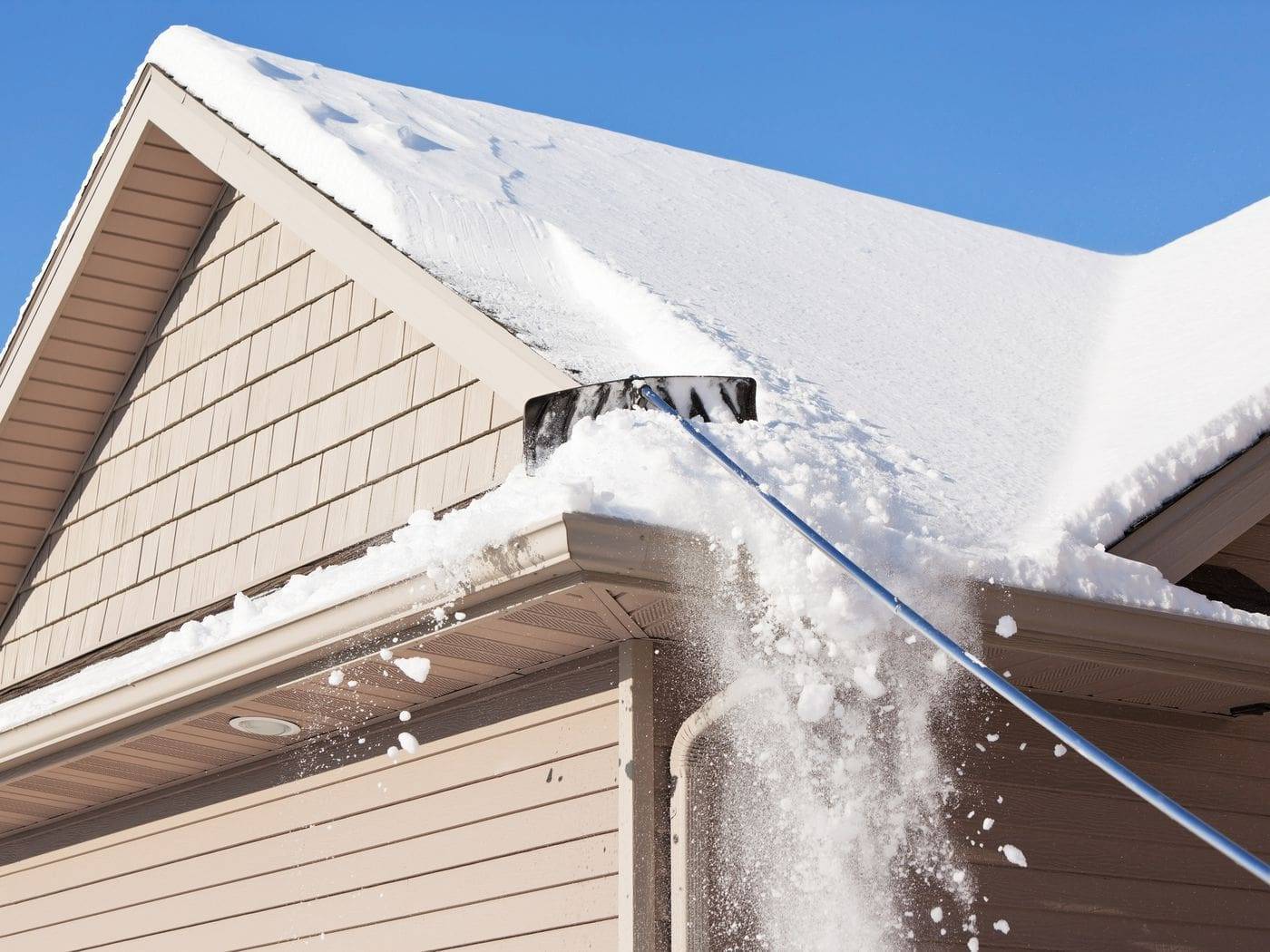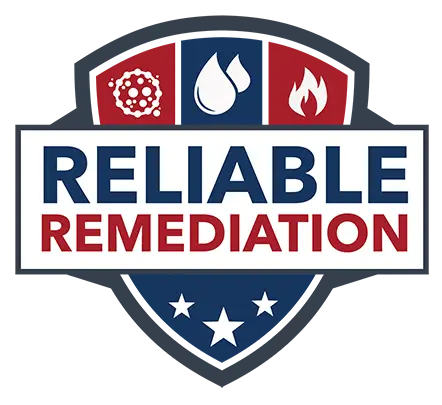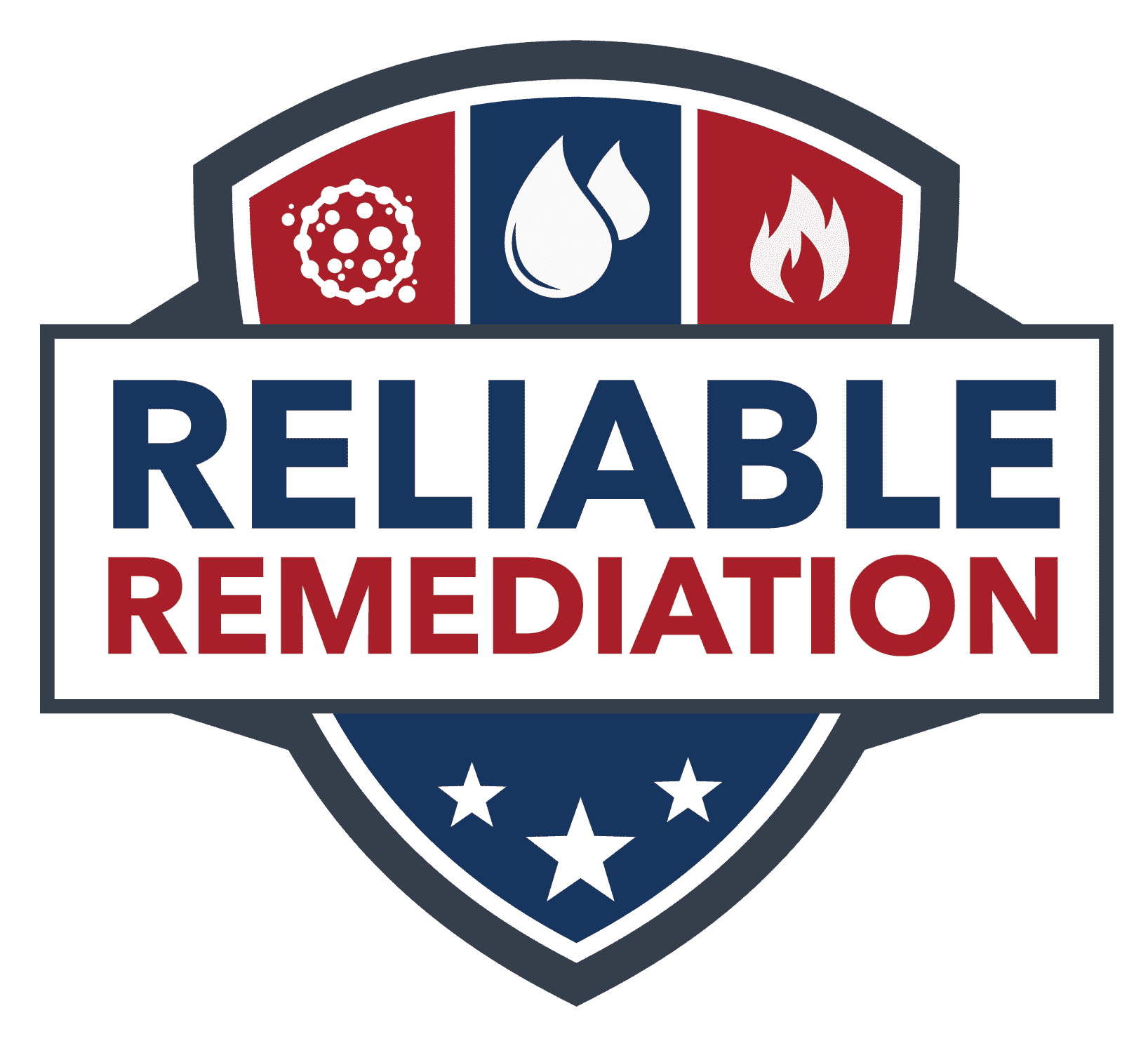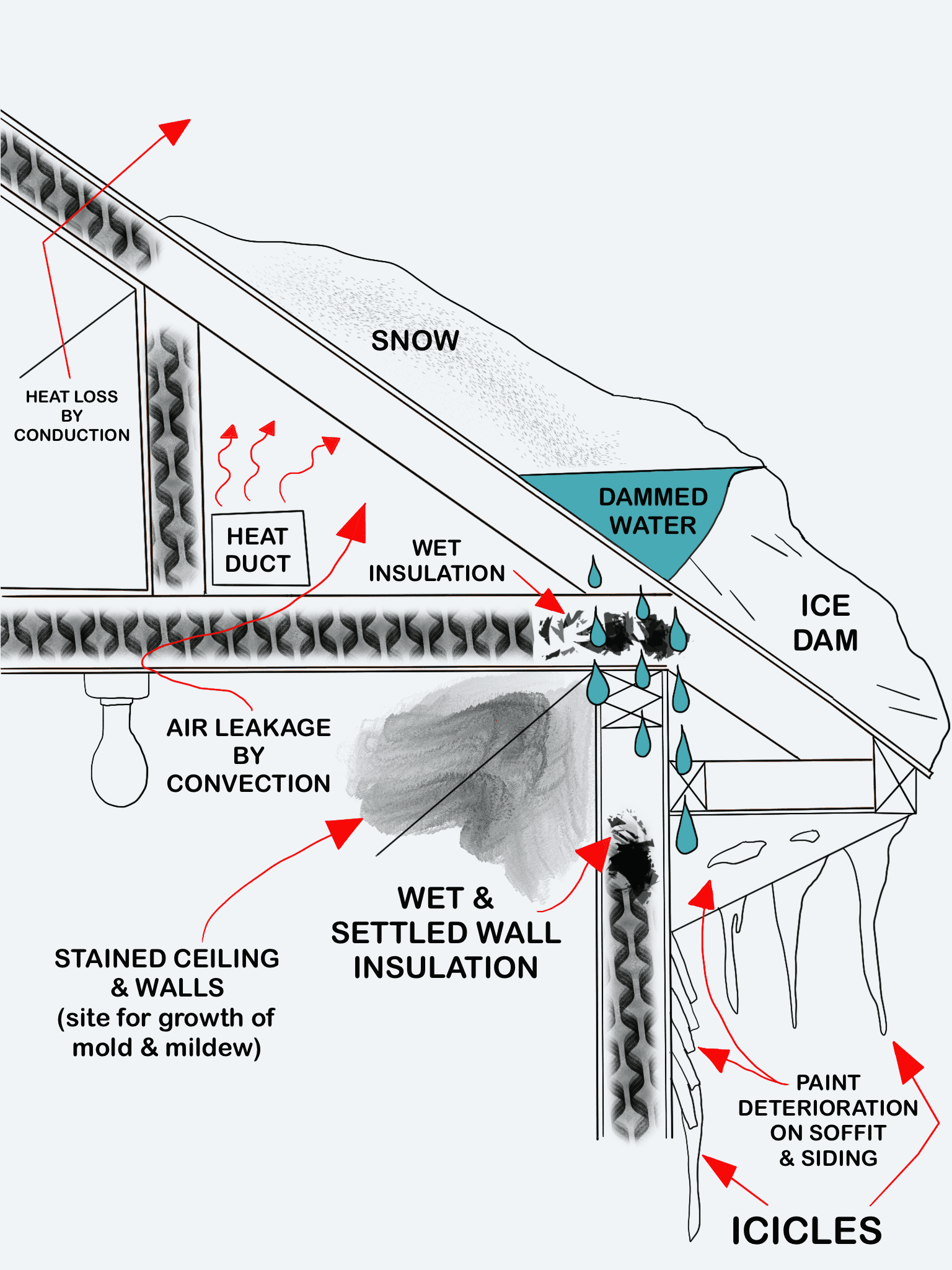Ice Dams and Water Damage
If you are experiencing a problem right now – call us for assistance Call NowRequest an EvaluationIce Dams & Water Damage
Freezing weather, snow building up on roofs of structures in northern climates or mountainous areas, thawing and freezing cycles and, ultimately, water damage from ice dams.
Ice dams form after significant snowfall when the heat from a poorly insulated home is applied to the underside of the roof decking, or simply when the weather outside warms up for a few hours and melts some of the snow. Melting snow and water runs down the roof, only to be frozen again when the sun goes down and the temperature drops. The partially melted snow and water pools, then freezes at the eaves of the structure and an ice dam forms with the overflow forming icicles. Since heat entering the attic rises to the peak, the eaves of the structure remain colder and the ice dam can’t melt to allow water to run off the roof.
With repeated thaw and refreeze cycles, the ice dam problem builds, and considerable water is trapped or pooled at the eaves or the base of valleys. While in a liquid state, the water seeps under shingles and tar paper (roofing felt) designed to protect the roof system from water intrusion. Eventually, the water seepage saturates plywood decking around the eaves and it wicks upward, until large portions of the decking become water saturated.
The problem may even be compounded when misguided homeowners block soffit vents to keep the cold air out of attic or garage areas. This practice prevents the ventilation and air movement needed to keep the roof decking uniformly cold, and to evaporate moisture from wood decking. Moreover, it may create stagnant air conditions that encourage mold growth and amplification.
To complicate the problem, as the damp plywood roof decking warms up due to direct sunlight or warmer weather, the increased temperature causes microbial growth on the wood decking to abound. Since the decking material is hidden in the attic, mold growth often goes unnoticed until sensitive persons begin experiencing allergic reactions or distress. Often, an insurance company becomes involved, since the problem, while usually not sudden, certainly is unexpected. In some cases, structure owners will notice water collecting on ceilings or running down interior walls causing dampness or discoloration of drywall. In other cases, water can run through wall framing and pool along the edges of or underneath hard or soft flooring (particularly carpet and pad) and go unnoticed for days or weeks.
To prevent ice dams and related water damage, in colder climates the best solution is to keep the roof uniformly cold to prevent ice melt, by providing ventilation from soffit vents to a ridge vent that runs along the entire length of the roofline. Some roofing contractors may install a 3-foot-wide, non-porous plastic material along the eaves in lieu of traditional roofing felt. Typically, this material is installed around the perimeter of the roof as the first course, and in valleys and around chimneys where ice dams are likely to occur. Then, when ice dams form and pooled water seeps under shingles, in all but the most severe cases it is prevented from contacting roof-decking materials.
Another alternative is to install heating panels or cables around the eaves or other snow collection points on the roof. When activated during freezing weather, this heating system melts snow and ice at the eaves, and allows for continuous water runoff. The downside is that heating coils may cause shingles to deteriorate faster, or the coils themselves may block snow to form an ice dam farther up the roof. Lacking these construction practices, about the only thing property owners can do is to monitor snow buildup on roofs and physically remove it to prevent ice dams from forming – using a roof rake to remove snow as far up toward the peak as you can so melted snow does not refreeze or clog gutters. However, this can be a difficult and dangerous task that may be best performed by experienced professionals.
Certainly, at the first sign of water on construction components inside the structure, property owners should conduct a thorough investigation into the source and quantity of water, and take corrective steps (extraction, drying) immediately. Since most structure owners lack the expertise and metering equipment necessary to conduct a thorough investigation of moisture intrusion, it’s probably best to call a professional water mitigation company..
Failure to dry moist building materials can result in the need for major property remediation, due to progressive microbial germination, mold growth, amplification and spore dissemination, along with concern about associated health affects for building occupants.

Ice dams: where the proverbial ounce of prevention (or correction) definitely is worth a pound of cure.
Disaster Happens. We can FIX it!
Adapted from an article by Jeff Bishop in Restoration and Remediation Magazine
It’s Easy to Get the Help You Need

Get an Evaluation

Receive a Customized Plan



